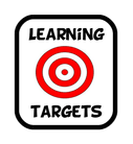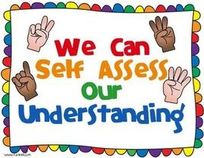5-5c Computational Thinking
Students break problems into component parts, extract key information, and develop descriptive models to understand complex systems or facilitate problem-solving.
Check with your learning partners to see if they need help.
1. Help give meaning to breaking problems into parts in a way that makes sense to your learning partners.
2. Get ideas from others for breaking problems into parts.
You will be successful if....
1. You seek understanding from others for breaking problems into parts.
"Be a friend to yourself; do all you can to be wise. Try hard to understand, and you will be rewarded."
2. You can describe the meaning of breaking problems into parts to someone who needs help from you.
"Who is wise and understanding among you? Show by your good life that your works are done with gentleness born of wisdom."
To earn Kid's Choice,
1. Rephrase the learning target in your own words to a learning partner.
2. Explain to a learning partner why today's learning target is important.
1. Help give meaning to breaking problems into parts in a way that makes sense to your learning partners.
2. Get ideas from others for breaking problems into parts.
You will be successful if....
1. You seek understanding from others for breaking problems into parts.
"Be a friend to yourself; do all you can to be wise. Try hard to understand, and you will be rewarded."
2. You can describe the meaning of breaking problems into parts to someone who needs help from you.
"Who is wise and understanding among you? Show by your good life that your works are done with gentleness born of wisdom."
To earn Kid's Choice,
1. Rephrase the learning target in your own words to a learning partner.
2. Explain to a learning partner why today's learning target is important.

Use the recreation search filter to find a campground or park in Michigan.
Make note of the camp site fee for that park or campground, number of nights you plan to stay, and number of sties you will need for your family. What is your total cost?
Michigan Parks/Campground Questions
Questions 1-2, 3-5, 6-7.
Make note of the camp site fee for that park or campground, number of nights you plan to stay, and number of sties you will need for your family. What is your total cost?
Michigan Parks/Campground Questions
Questions 1-2, 3-5, 6-7.

Create a google spreadsheet to price out everything you need to plan a camping trip for this summer! The first 2 items on your spread sheet should be:
1) tent
2) sleeping bag
3) any other camping supplies you have time to look for
Use the sum function to total up the price column of your spreadsheet.
1) tent
2) sleeping bag
3) any other camping supplies you have time to look for
Use the sum function to total up the price column of your spreadsheet.







